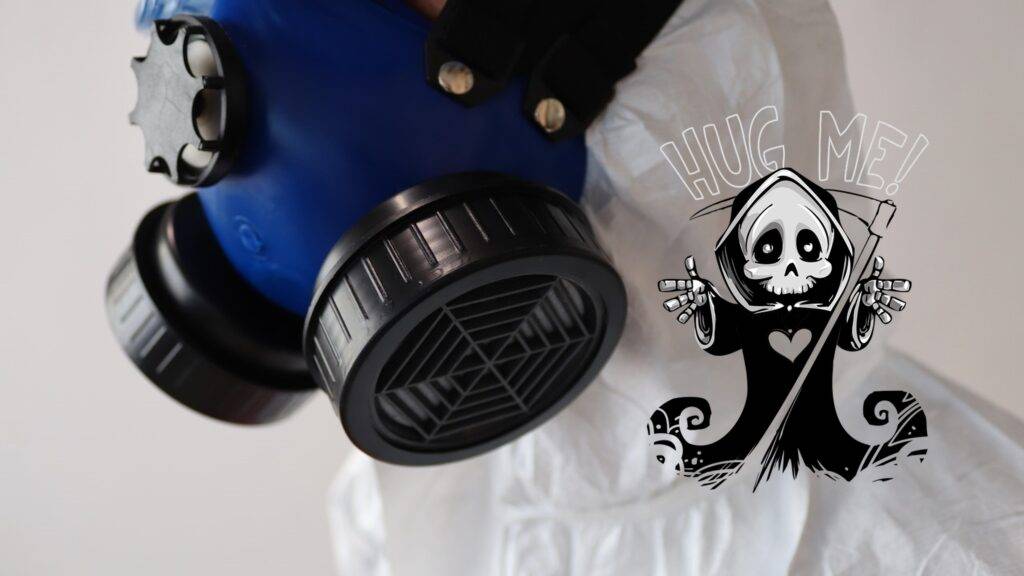
Nightmares are frightening dreams that result in feelings of terror, fear, distress, or anxiety possibly due to stress, irregular sleep, medications, mental health disorders, and environmental conditions. Everyone experiences a few nightmares for no reason known. Moreover, it has been noted that the change in place can change the frequency and quality of nightmares. This might be due to environmental conditions including air pollutants which are often ignored as a valid reason for the scary dreams. Carbon monoxide could be one reason for nightmares due to its ability to interact with multi-organ systems.
1. How carbon monoxide induce complications?
Generally, we breathe 78% N2, 21% O2, and 0.04% CO2 with a trace amount of other gases including 0.05 to 0.12 ppm Carbon monoxide (CO). CO has the potential to affect basal ganglia (a group of subcortical nuclei) and subcortical white matter (deeper tissues of the brain) change the nervous system and can induce nightmares. CO acts as a silent killer due to its potential poisoning and its characteristics as an odorless, colorless, and tasteless gas. It is produced by incomplete combustion including vehicular emission. It can get accumulated in an enclosed space if not properly ventilated.
Long-term exposure to high CO (>50 ppm) can induce neuropsychological and cardiovascular complications. CO has 210 times higher affinity with hemoglobin than oxygen hence easily competes with oxygen molecules and produces carboxyhemoglobin in the blood. This process leads to low oxygen in the bloodstream which results in the impairment of several organ systems through cellular hypoxia.
On another hand, a low level of CO can lead to an imbalance in cognitive functions like memory, day-to-day problem solving and sometimes serious heart disorders. Common symptoms of low-level CO include sleep disorder, blurred vision, confusion, numbness, headache, fatigue, malaise, nausea, and vomiting.
Vulnerability to CO poisoning depends on respiratory conditions, cardiovascular health, anemia, age, and sex. Male elderly and younger people with respiratory and cardiac disorders are at higher risk.
2. CO and frightening dreams
The exact reasons for nightmares are unknown and complex due to multiple factors and conditions. However, based on the existing scientific studies, nightmares are an indication of neuropsychological imbalance due to various reasons. One of the reasons could be the environmental conditions of the people interacting while sleeping. High levels of CO induce suffocation while sleeping by reducing the oxygen level in the body with carboxyhemoglobin formation. Under hypoxia condition, endothelial and platelets forms peroxynitrate a free radical that causes mitochondrial dysfunction leading to cellular toxicity. This could induce dreams during sleep including nightmares. Therefore, well-ventilated bedrooms can reduce nightmares significantly by reducing the concentration of CO in the air by dilution.
3. How to reduce CO exposure?
It’s impossible to eliminate nightmares due to multiple factors involved in them. However, significant reduction is achievable by following the guidelines to reduce nightmares. To reduce CO exposure from indoor air EPA guidelines can be highly useful.
- Reduction of incomplete combustion by maintaining fuel-burning appliances.
- Maintenance of ventilation system of the bedrooms.
- Proper exhaust system of the furnace in your kitchen can reduce CO level.
- Public awareness about CO poisoning and its management practices at home and workplace is crucial for the reduction of exposure.
- Setting up proper standards for home and workplace ventilation.
- Installation of CO detectors for a warning system in places where people are at risk from exhaust fumes can facilitate reduction at source.
Conclusion
Carbon monoxide could be one reason for nightmares since it has the potential to interact with multiple organ systems. Elimination of excess amounts of CO from home can be easily achievable by reducing incomplete combustion and maintaining the well-ventilation system while sleeping. Whereas, public awareness plays a significant role in the management of such critical issues.

